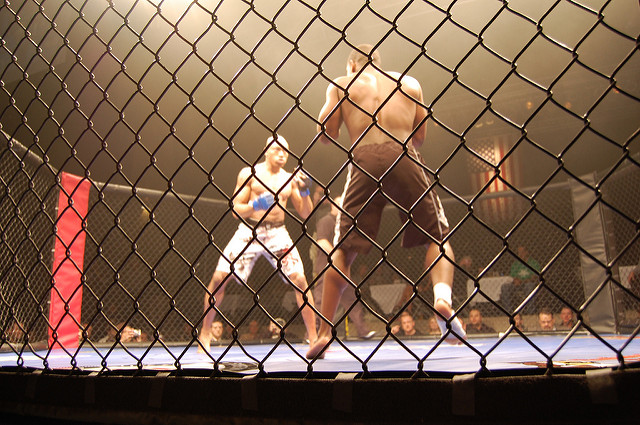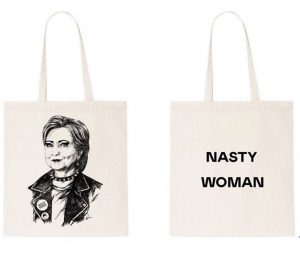
The political consensus around free trade has taken a dramatic turn over the past year, with both Republicans and Democrats claiming to be critics after decades of largely agreeing on a pro-free trade agenda. The North American Free Trade Agreement (NAFTA) passed with bipartisan support in the 1990s, but now Donald Trump attacks it as the “worst deal in history.” Trump’s critique of free trade as costing jobs and benefiting other countries contributed to his support among working class voters as his message tapped into dissatisfaction and economic dislocation. But to what extent have free trade agreements led to the loss of U.S. jobs and boosted the national economies of countries like Mexico or China? And how have these agreements impacted workers in the U.S. and corporate profits?
NAFTA was not a deal driven by the interests of Mexican companies and workers, but supported by U.S. investors to enable the movement of capital and finance by removing barriers to investment. This accelerated the multi-decade long process of eliminating economic regulations and increasing privatization. Most of the benefits from NAFTA have gone to large corporations and U.S. based companies. Meanwhile, smaller firms and Mexican companies have experienced increased competitive pressures and dwindling profits. Research has also shown that NAFTA contributed to increased income inequality and less class mobility in Mexico. Free trade has also weakened the power of national governments and strengthened the influence of international institutions like the IMF and World Bank.
- Nitsan Chorev. 2007. Remaking U.S. Trade Policy: From Protectionism to Globalization. Ithaca, NY: Cornell University Press.
- Malcolm Fairbrother. 2014. “Economists, Ccapitalists, and the Making of Globalization: North American Free Trade in Comparative-Historical Perspective.” American Journal of Sociology 119(5): 1324–1379.
- Emilio A. Parrado. 2005. “Economic Restructuring and Intra-Generational Class Mobility in Mexico.” Social Forces 84(2): 733–757.
NAFTA enabled corporations to move more freely between borders, but made it harder for people to move across borders. This has meant less cyclical migration between U.S. and Mexico, with the unintended consequence of more Mexican immigrants settling in the U.S rather than migrating back and forth.
- Patricia Fernández-Kelly and Douglas S. Massey. 2007. “Borders for Whom? The Role of NAFTA in Mexico-U.S. Migration.” The Annals of the American Academy of Political and Social Science 610(1): 98–118.
According to scholars, free trade has weakened the power of workers and their unions in both the U.S. and developing countries, which has contributed to lower wages and worse working conditions for all workers. Research on the apparel industry in particular has shown how NAFTA contributed to declines in wages, employment, and unionization in the U.S., while outsourced production in Mexico has poor working conditions and low pay. In particular, female workers in the global South endure exploitation in low-skilled manufacturing.
- Gary Gereffi, David Spencer, and Jennifer Bair. 2002. Free Trade and Uneven Development: The North American Apparel Industry After NAFTA. Philadelphia, PA: Temple University Press.
- Melissa W. Wright. 2006. Disposable Women and Other Myths of Global Capitalism. New York, NY: Routledge.
- Jennifer Bickham Méndez. 2005. From the Revolustion to the Maquiladoras: Gender, Labor, and Globalization in Nicaragua. Durham, NC: Duke University Press.
Free-trade agreements have largely had negative consequences for countries and companies in the global south, while larger, transnational, and more technically-advanced companies have benefited. Countries like the Dominican Republic and Costa Rica became dependent on export production and agriculture, which exposed them to fierce competition and downward pressures on wages with little broader economic development and a loss of internal domestic suppliers and markets. In Mexico, most of the new factories in the free-trade border zones are controlled by U.S. companies.
- Raúl Delgado Wise and James M. Cypher. 2007. “The Strategic Role of Mexican Labor Under NAFTA: Critical Perspectives on Current Economic Integration.” The ANNALS of the American Academy of Political and Social Science 610(1): 119–42.
- Saskia Sassen. 2006. Territory, Authority, Rights: From Medieval to Global Assemblages. Princeton, NJ: Princeton University Press.
However, free trade also creates opportunities for new labor transnationalism. NAFTA led to cooperation among workers in the U.S., Canada, and Mexico by sparking joint efforts to improve labor protections in free trade agreements and creating legal mechanisms to bring complaints against corporations.
- Tamara Kay. 2011. NAFTA and the Politics of Labor Transnationalism. New York: Cambridge University Press.
- Jamie K. McCallum. 2013. Global Unions, Local Power: The New Spirit of Transnational Labor Organizing. Cornell University Press.









